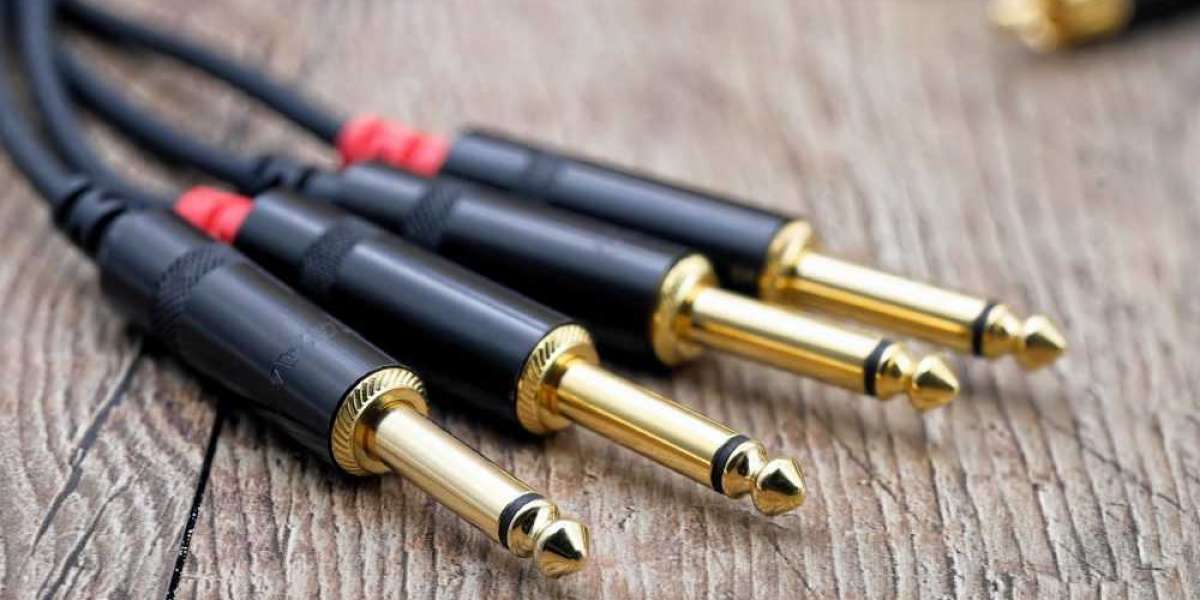So, ever wondered how sound from your TV or game console gets to your speakers, or how music from a record player can play through a bigger speaker system? Behind the scenes, various types of cables help carry sound and video from one device to another. One of these handy connectors are the JACK RCA CABLES.
Moreover, it is famous as the "jack RCA cable" or just "RCA jack." But what exactly are they, and how do they work? Let's dive into the world of RCA cables and explore how these little helpers make big sounds and clear pictures possible. If you are someone who wants to know more about this topic, then don’t worry. So, don’t worry, as we will tell you everything that there is on this topic. Therefore, don’t worry, and just keep reading.
What Is an RCA Cable?
So, RCA stands for Radio Corporation of America, the company that first introduced these cables way back in the 1940s. Originally, RCA cables were to connect record players to amplifiers, making it possible for people to listen to music on large speakers. Over time, RCA cables became super popular because they’re simple to use and very effective.
Today, RCA cables are in many different types of audio and video setups. They have two or three plugs at the end, usually colored red, white, and yellow. Each color represents a different type of signal:
- Red is for the right audio channel (the sound that plays on the right side of a stereo system).
- White is for the left audio channel (the sound that plays on the left side of a stereo system).
- Yellow is for video signals (so you get pictures on your screen).
These cables have a straightforward job: carrying signals (or information) from one device to another.
How RCA Cables Are Built
The JACK RCA CABLES are a special type of wire with a few key parts:
- The Plug: Each end of the cable has a plug that connects to a device, like a TV or speaker. The red, white, and yellow color-coding helps you know where each plug goes.
- The Metal Pin: Inside each plug, there’s a metal pin that carries the signal from the device. This pin is the "male connector."
- The Shielding: Inside the cable, there’s also something called shielding. Shielding is a layer that protects the signal from interference—like static or buzzing sounds.
When you connect an RCA cable from a game console to a TV, for instance, the signal travels from the console, through the cable, and into the TV. The TV then interprets the signal to produce sound and pictures. The shielding helps ensure that you don’t get interference, so the picture looks clear and the sound comes through smoothly.
Types of RCA Cables
Not all JACK RCA CABLES are exactly the same. Here are some of the common types you might come across:
- Standard RCA Cables: These have the red, white, and yellow connectors. They are for basic audio and video connections and are often with older game consoles, DVD players, and TVs.
- Component RCA Cables: These RCA cables are usually red, green, and blue. They are to carry higher-quality video signals because each color carries a different part of the video signal. You might find these on DVD players or older Blu-ray players.
- Composite RCA Cables: These cables have one yellow plug for video and a pair of red and white plugs for audio. Composite RCA cables are common with older devices that don’t need high-definition (HD) video.
- Digital RCA Cables: These RCA cables are for digital audio and sometimes have a single orange connector. They are for connecting high-quality audio devices.
Each type of RCA cable has its special job, but they all work in a similar way by carrying signals from one place to another.
How Do RCA Cables Work?
At first glance, the RCA CABLES may look like a simple wire. But let’s break down what’s happening inside:
- Sending the Signal: Imagine you have a game console that you want to connect to your TV. The game console creates signals for sound and video. These signals travel through the RCA cable to the TV.
- The Flow of Electricity: The signal is actually a type of electric current. When you plug in an RCA cable, the electricity flows through the metal pins inside the plugs and into the device at the other end (in this case, the TV).
- Receiving the Signal: Inside the TV, there are circuits that “read” the signals coming from the cable. The TV takes the video signal and displays it as a picture, while the audio signal goes to the TV’s speakers to make sound.
The RCA cable is like a bridge. On one side, you have a device sending out signals, and on the other side, you have a device receiving those signals.
Why the Colors Matter
If you’ve ever connected RCA Connector cables to a device, you probably noticed that the colors—red, white, and yellow—have to match with the colors on the device’s ports. These colors help make sure each signal goes to the right place:
- Red goes to red: Right audio channel.
- White goes to white: Left audio channel.
- Yellow goes to yellow: Video signal.
If you mix up the colors, you might end up with no picture or sound, or the sound might come out of the wrong speakers.
Conclusion:
RCA cables may not be as common in brand-new devices, but they continue to play an important role in connecting different types of audio and video equipment. From delivering your favorite tunes on a record player to bringing classic video games to life on screen, RCA cables remain a reliable choice for many people. Whether you’re using them to connect a retro gaming console or setting up a vintage speaker system, RCA cables are a simple yet powerful way to bring sound and visuals to your devices.







